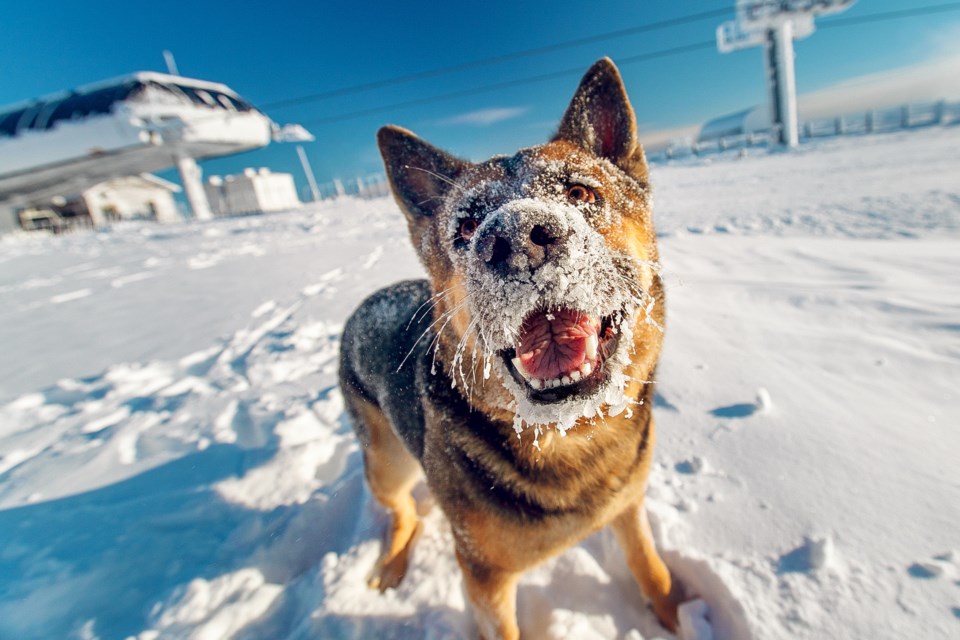As temperatures drop in Ontario and the coldest air of the year arrives, pet owners may be looking for tips on how to protect their furry friends during their daily exercise outings and bathroom breaks.
"Just like humans, pets can feel the cold, but they can’t tell us when they’re chilly," the Toronto Humane Society says.
Common signs your dog is not dealing well with the cold include shivering or trembling, cold ears, lethargy and slowing down, whining, anxiety, hunched posture and tense muscles.
Some pets are more susceptible to the cold than others.
Older dogs are often more at risk due to decreased mobility, thinner fur, or health conditions like arthritis, the humane society says.
Pets with other health conditions may struggle to maintain their body temperature.
Dogs with short fur — like Greyhounds, Chihuahuas and Whippets — and small breeds can feel the cold more quickly than larger or thick-coated dogs.
Sweater or jacket
Even healthy dogs in their prime are susceptible to frostbite and hypothermia.
So, what are some practical steps to protect Fido during cold snap?
Many dogs can benefit from wearing a sweater or jacket outdoors in weather like this.
"Look for well-fitting clothing that covers the chest and back, but doesn’t restrict movement," the humane society says.
You may notice your dog lifting a paw during a walk or trip to the dog park — a sure sign they are not comfortable.
Cold pavement, snow and ice can be tough on a dog’s paws. Ice melt chemicals and salt can also cause irritation or burns.
To protect their paws, you might consider putting booties on your canine friend.
DIY paw wax
"It may take some time for them to get used to wearing booties, but they offer great protection," the humane society says.
If your dog isn’t comfortable with booties, paw wax is another option to create a barrier against the elements.
The Ontario SPCA and Humane Society even has a DIY recipe for a paw balm you can make at home. You can also pick up a small container at the store.
"Be sure to wipe off their paws after a walk to remove any salt or ice melt," the humane society says.
While you might think your pooch only needs extra water in the dog days of summer, it’s important to ensure Rover has water available during winter outings as cold weather can cause dehydration.
If your dog gets wet from snow, dry them off immediately. Wet fur loses its insulating properties, making it much easier for your pet to get cold.
After a walk, wipe down your dog’s fur, paws and belly, and remove any snow or ice that may have accumulated.
Heated pet beds
The humane society says heated pet beds or heating pads designed specifically for pets can be a great way to provide extra warmth on a cold day.
"Be sure to follow all safety guidelines and monitor your pet when using heating pads to avoid burns or overheating," the humane society cautions.
And if all this seems a little too much, then the next best piece of advice is for you and your dog to limit your time outdoors over the coming days.
A one-hour walk or outing to the dog park may not be in the cards until the polar vortex recedes.
If you dog is lifting their paw, it's likely time to turn towards home.
"Pets, especially those not suited for cold weather, should have limited exposure to frigid temperatures," the humane society says. "For dogs, shorten walks during very cold days, and watch for signs of discomfort such as paw lifting or shivering."
"Keeping your pet warm during cold weather is essential for their comfort and well-being," the humane society added. "By recognizing the signs that your pet is cold and taking the proper steps to keep them warm, you can ensure they stay healthy and happy all winter long."




